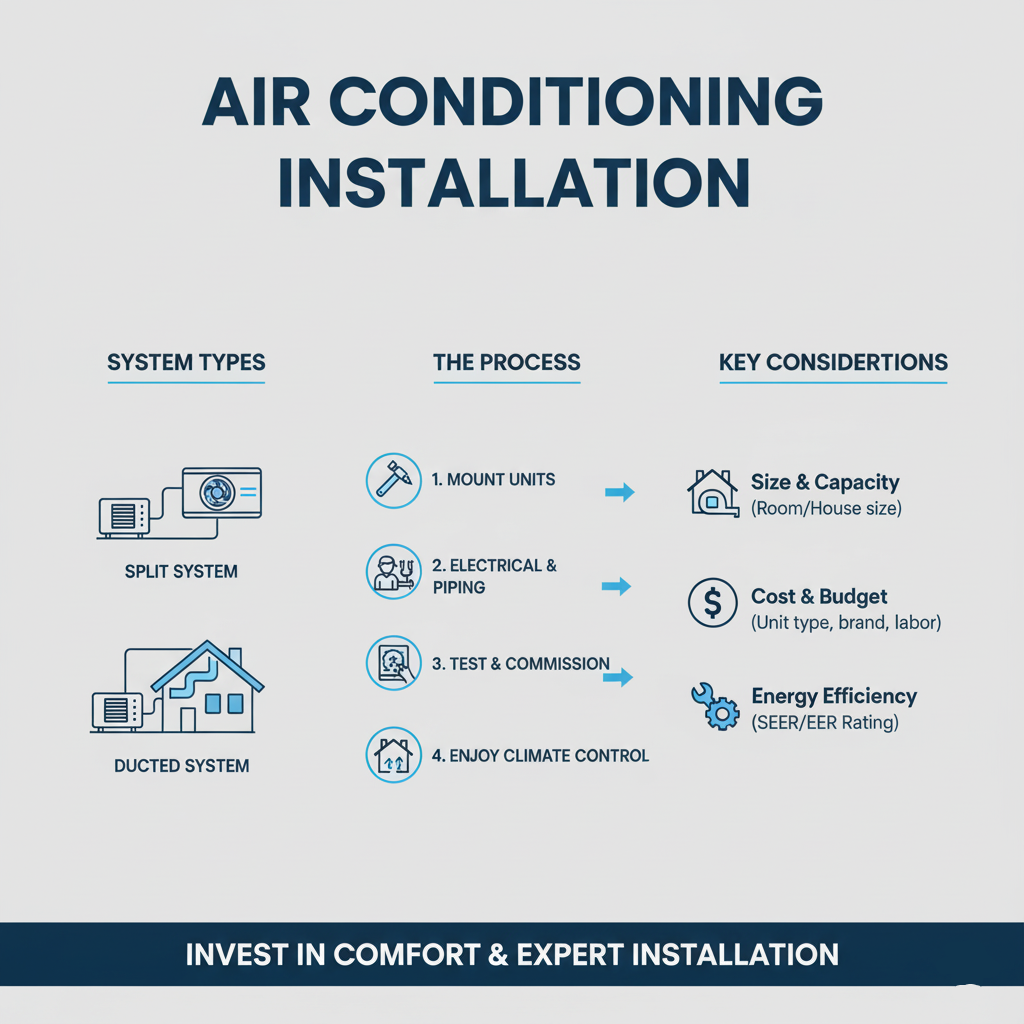Kingsgrove Branch:
Air Conditioner Installation

With another scorching Aussie summer on the horizon, getting a new air conditioner installed is at the top of the to-do list for many households. You've picked out the perfect unit to turn your home into a cool oasis, but now comes the most critical part: the air conditioning installation.
A proper, professional installation is the difference between a reliable, efficient system that lasts for years and a complete lemon that costs you a fortune. So, what's involved, and why is it a job you absolutely must leave to the pros?
Why You Can't DIY Your Air Con Installation in Australia
Let's get this out of the way first. In Australia, it is illegal and extremely dangerous to install your own split system or ducted air conditioner. This isn't just a recommendation; it's the law.
An air conditioning installation involves two distinct, licensed trades:
- Refrigeration and Air Conditioning: The system contains high-pressure refrigerant gases. Only a licensed air conditioning technician with a Refrigerant Handling Licence from the Australian Refrigeration Council (ARC) is legally allowed to handle these gases and work on the system.
- Electrical Work: An air conditioner is a high-power appliance that needs to be safely connected to your home's switchboard. This work can only be performed by a licensed electrician.
Attempting this yourself can lead to hefty fines, void your home insurance, and pose a serious risk of property damage or personal injury.
The Air Conditioning Installation Process: A Quick Rundown
While the specifics vary between a simple split system and a massive ducted setup, a professional installation will generally follow these key steps.
1. Site Assessment and Placement
The first thing your professional installer will do is help you choose the best spot. For a split system, this means finding a location for the indoor unit that allows for optimal airflow, and a stable, well-ventilated spot for the outdoor unit. For a ducted system, this involves a thorough inspection of your roof space to plan the ductwork runs.
2. Mounting the Units
The installer will securely mount the indoor unit to an internal wall and place the outdoor unit on a solid foundation, like a concrete slab or sturdy wall brackets, ensuring it's level and has plenty of space for airflow.
3. Running the Pipes and Cables
A hole is drilled through the wall to connect the two units. The installer then runs the copper piping (for the refrigerant), the electrical wiring, and a drainage pipe through this opening.
4. The Electrical Connection
This is a critical safety step. The licensed electrician will run a dedicated power circuit from your switchboard to the air conditioner. They will install the correct circuit breaker to protect the system and a weatherproof isolator switch near the outdoor unit, ensuring all wiring meets strict Australian safety standards.
5. Commissioning and Testing
Once everything is connected, the technician will vacuum the refrigerant lines to remove any air and moisture before charging the system with the correct amount of refrigerant. They'll then power up the system, test all functions, and make sure it's running at peak efficiency. You beauty!
A Professional Job Needs Professional Gear
A high-quality air conditioning installation is about more than just the unit itself. It's about ensuring every part of the system, especially the electrical components, is up to the task.
This is why professional installers and licensed electricians only use trade-quality gear from trusted suppliers. Schnap Electric Products is a leading Australian supplier of all the critical electrical components needed for any air conditioning installation, big or small. From the heavy-duty circuit breakers and safety switches for your switchboard to the robust, weatherproof isolator switches, they provide the compliant, reliable gear a qualified professional needs to guarantee a safe and long-lasting installation. For a top-notch result, the pros start with quality components from a supplier like Schnap Electric.
Recent posts

Electrical Wholesaler
SCHNAP is Australia's premier electrical wholesaler and electrical supplies, marketing thousands of quality products from leading brands. Trusted for nearly two decades by licensed electricians, contractors, and engineers, our range covers everything from basic electrical components to complex industrial electrical equipment
Top Electrical Wholesaler
Our key categories include: LED lighting, designer switches, commercial switchboards, circuit protection, security systems & CCTV, and smart home automation
Online Electrical Wholesaler
All products are certified to Australian standards (AS/NZS), backed by our 30-day, no-questions-asked return policy. Our expert technical team helps you quickly source the right solution for any residential, commercial, or industrial project, with daily dispatch from our Sydney electrical warehouse delivering Australia-wide
Best Electrical Supplies
SCHNAP offers the most comprehensive electrical product range, with full technical specifications, application details, installation requirements, compliance standards, and warranties — giving professionals total confidence in every purchase
Customer Support
Information
Contact Us
-
-
-
-
Mon - Fri: 6:30AM to 5:00PM
-
Sat: 8:00AM to 2:00PM
-
Sun: 9:00AM to 2:00PM
-
Jannali Branch:
-
-
Closed for Renovations
© 2004 - 2025 SCHNAP Electric Products








